APRIL 14, 2021 : As many of you already know, Mark and I have spent this past year working on Wandering Jew – a mobile app for locating Jewish Heritage Sites. The app is almost ready for its initial release on Android and is now in final beta testing. In the past couple of weeks, during our stay with our daughter in Johannesburg, we added South African Jewish Heritage Sites to the data.
Tomorrow is the big day – the first time we use the app in a real situation. We will be going to the sites around Johannesburg to verify their GPS locations. That means that all GPS information in the app is considered not verified until someone actually goes to the location and either confirms that the data is correct or supplies updated GPS coordinates to the right place.
When starting to research South Africa, I assumed there would not be many sites and it turned out to be much much more than I expected. It reminded me of Europe – many Jewish communities that no longer exist. They did not disappear for the same reasons, but just like in Europe, the landscape is full of remnants of former Jewish communities. There are, for example, synagogues that stand abandoned or turned into museums, or as in one case, became an AirBnB accommodation.
In the Johannesburg area, I found nine Jewish Heritage places to add to the app. Tomorrow we will go to as many as we have time for. Very excited to be finally able to test the app outside of the house.
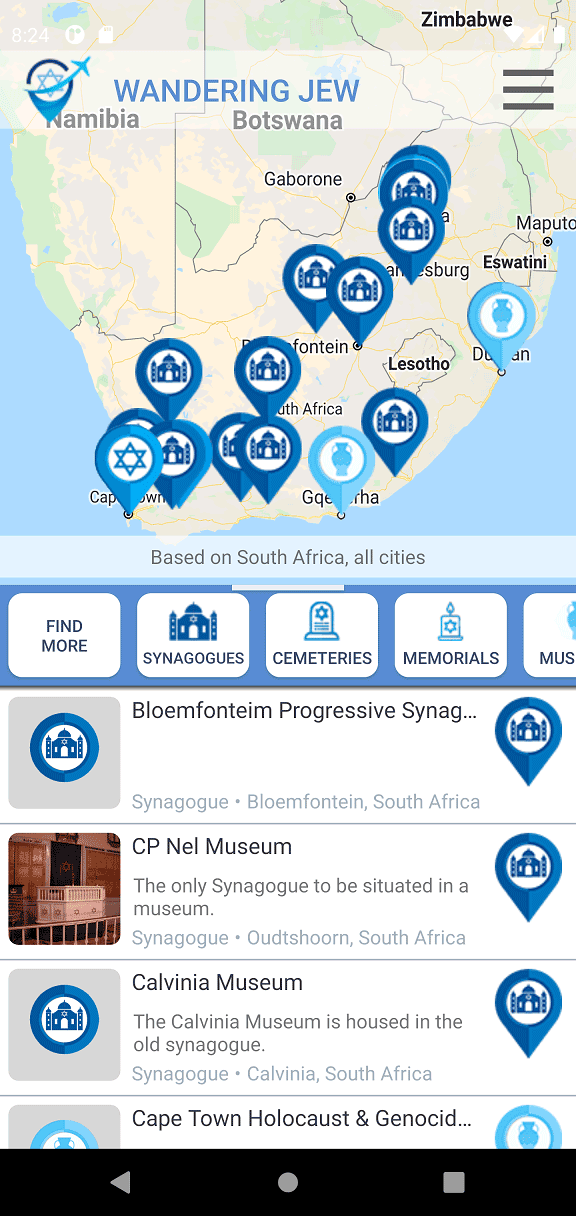
Sites in South Africa 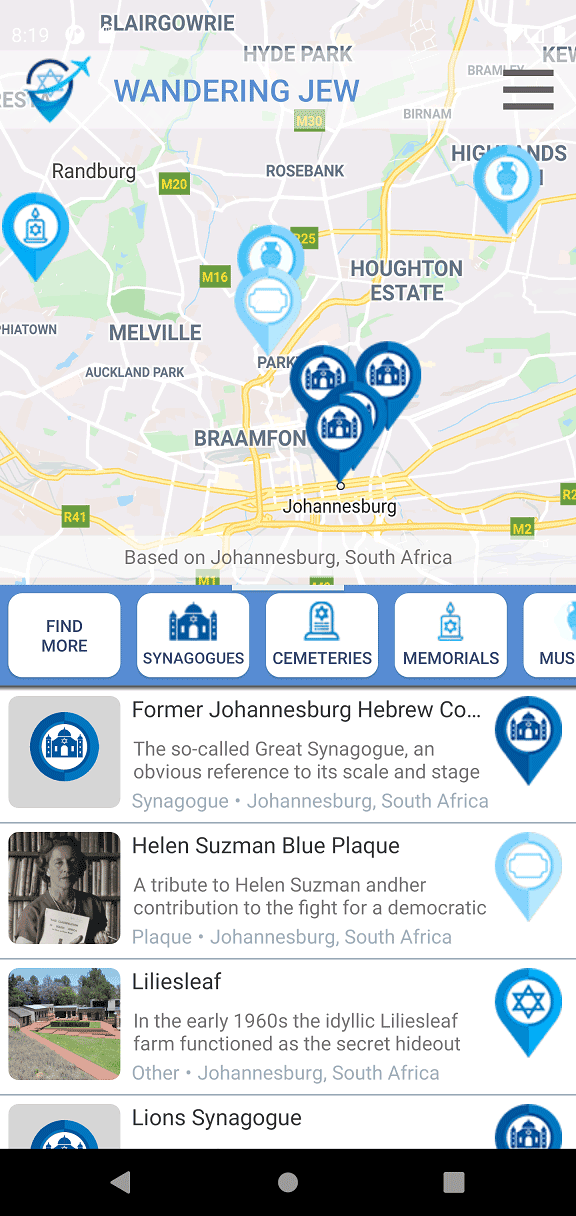
Sites in Johannesburg
APRIL 15, 2021 : The good news is that the day was very productive. The bad news is that the day was productive because we discovered several problems with the app. I guess that is to be expected when moving from emulating on the computer and into the real-world.
The morning got off to a slow start. Over breakfast, Mark suddenly realized that there was a mistake in the app. Our first problem. The app has a TAKE ME THERE button, that passes information to Google Maps. The information it needs to pass is the GPS coordinates. Instead, the street address was being sent to Google Maps but not all locations have street address. After an hour of coding, Mark fixed this to work properly and we were finally ready to go.
Before getting into the car, we selected which Jewish Heritage site we wanted to visit first and clicked TAKE ME THERE. Now the next problem was discovered. Although the app is set to work with only Google Maps, it kept opening Waze instead, and Waze was not finding the location. (Waze uses a different API than Google Maps). Only when Mark removed Waze from his phone, it worked well. This is definitaly a problem that will need looking into. Two hiccups and we had not yet even left the house.
Our first destination was a Holocaust Memorial. In doing my internet research about Johannesburg, I found a page about Herman Wald, a sculptor that one of his most famous works is a Holocaust Memorial in the Westpark Cemetery in Johannesburg. I did not find any more exact information about the location of this monument. Westpark Cemetery is a very large non-denomination designated burial ground, and has Christian, Jewish, Muslim and Chinese burial areas.
When you write a general name, like Westpark Cemetery as the address into Google Maps, it will take you to the middle of that place. We followed directions and found ourselves in the middle of the cemetery without any sign of the memorial we were looking for. We continued to drive all around, with no luck. We saw an area of Jewish graves, hidden behind a barbed wire fence, but did not find a way to reach that area. It was very interesting to drive around and see the different grave types – but no holocaust memorial anywhere. After showing one of the cemetery workers the photo of the memorial, he told us we needed to exit the cemetery and drive alongside its perimeter for about two kilometers, and then we will find the gated entrance to the Jewish section. As we drove along, it was very easy to tell where the Jewish section started – it was where the fence became barbed wire.
We entered the Jewish section and right away saw the impressive monument.
In 1955 the Jewish Community in Johannesburg wanted to build a memorial to the Jewish victims of the Holocaust. The design submitted by Herman Wald, a Jewish sculptor living in South Africa and originally from Lithuania, won the competition. His sculpture entitled A Memorial to the Six Million was erected in 1959. It consists of six fists, each holding a shofar. The shofars create an arch, that surrounds the flaming commandment “You shall not murder” – לא תרצח.
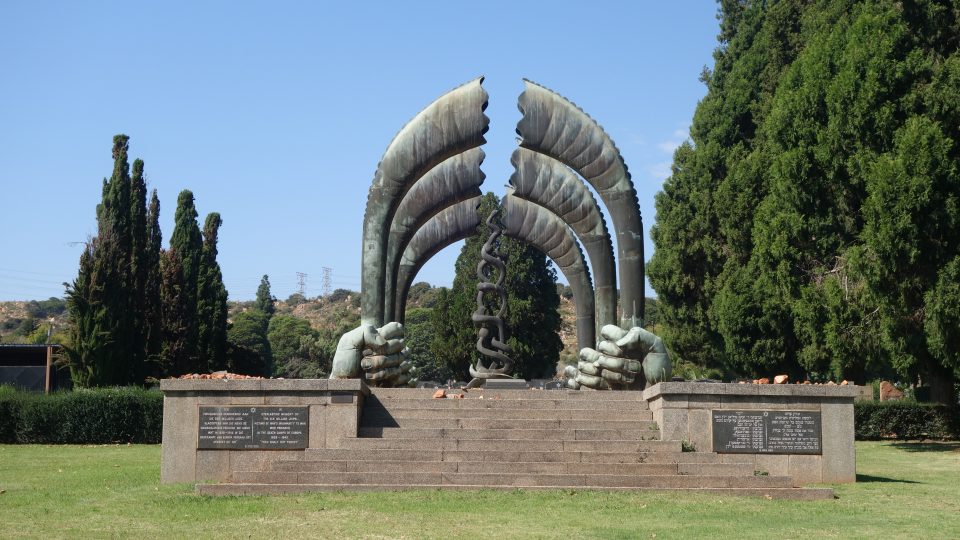
Memorial to the Six Million 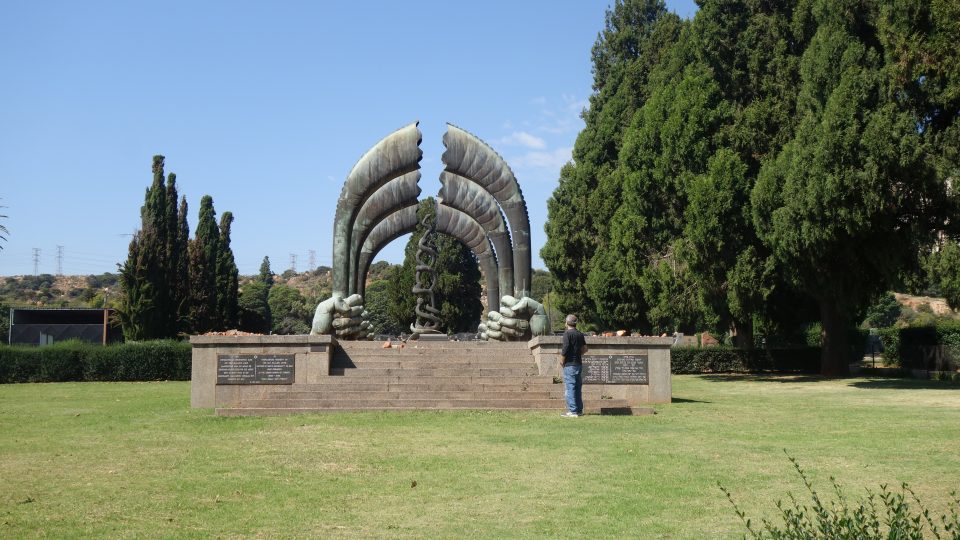
Mark next to the monument gives a sense of how large it is 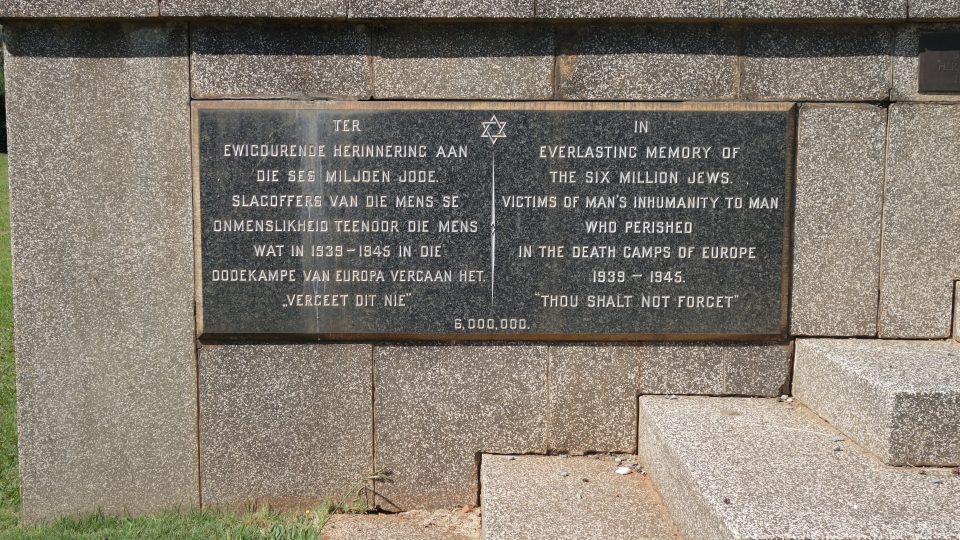
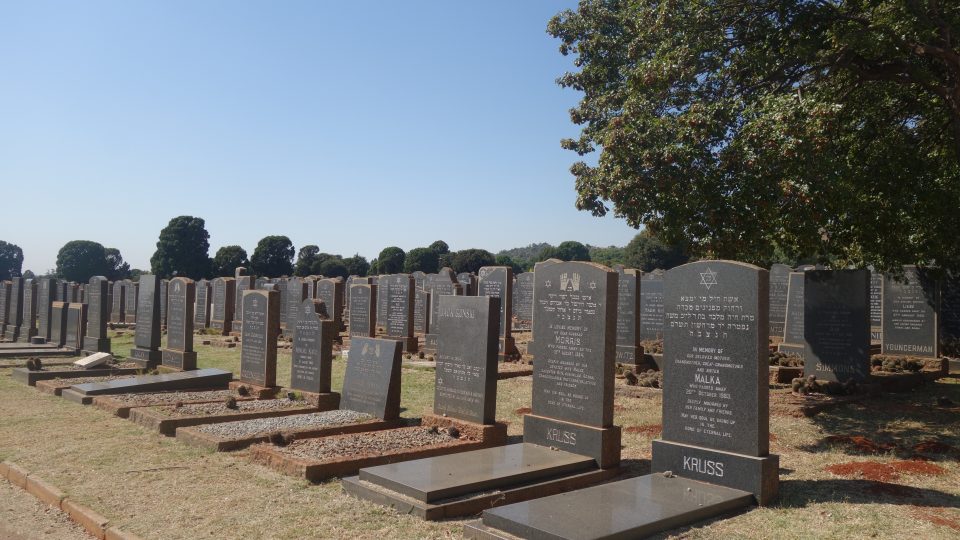
The Jewish Cemetery 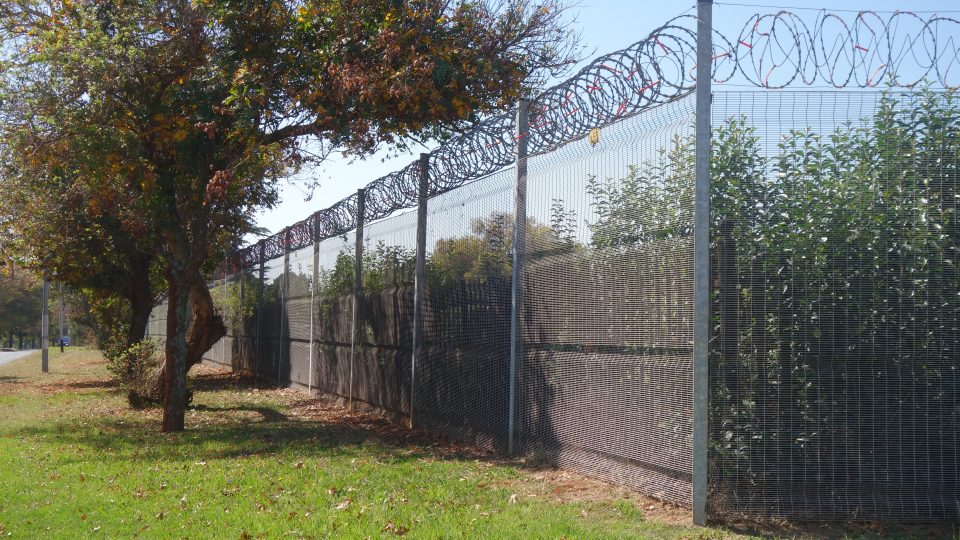
The barbed wire fence surrounding the Jewish section of the cemetery
Once we were directly in front of the memorial, we wanted to change the GPS coordinates in the app from the middle of the cemetery to the right location. Although GPS verification worked perfectly in the emulator, it now gave error messages. Problem number three. (Later in the day, when Mark looked into this, it turned out that the app was verifying GPS addresses by making sure that they were greater than 0. Because we were in South Africa, the GPS latitude value is a negative number to represent below the equator, and therefore not greater than zero. Luckily, we were testing in South Africa and not in Europe, otherwise we would not have found the problem).
Our next destination was the Johannesburg Holocaust and Genocide Center. Due to COVID, entrance was only by appointment and we were scheduled for 11:00. At the center, we were given a private guided tour to learn about the significant elements of the building. The center opened in 2016, and the building was designed to tell a story.
Throughout the building, railroad tracks play an important element in the design, both inside and outside. The huge concrete wall at the entrance has train tracks crossing each other, representing journeys into the unknown. The rocks in the wall symbolize the hardships. Across the cobbled courtyard is an outdoor coffee shop, representing the cafes of Europe, and life that went on regardless of what was happening elsewhere.

Entrance to the Johannesburg Holocaust & Genocide Centre 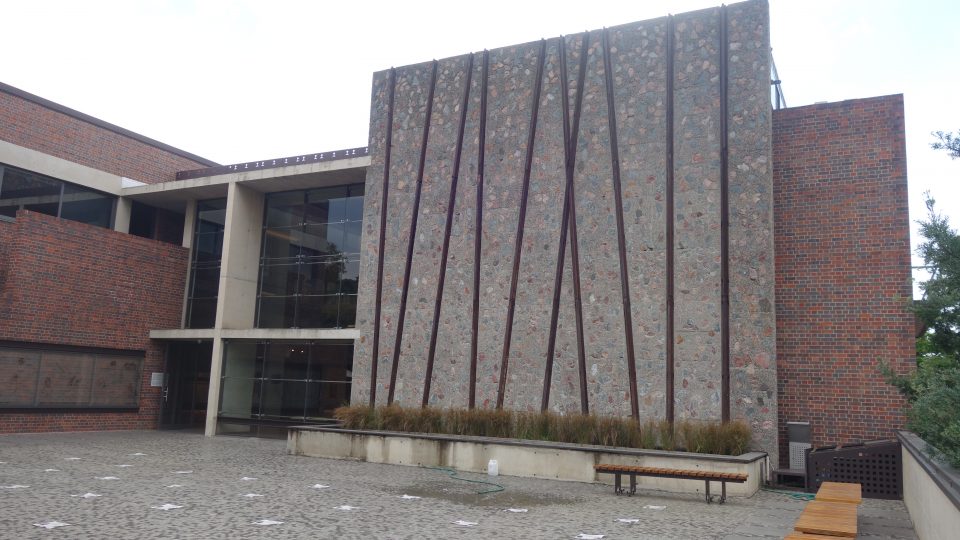
Railway tracks and stones 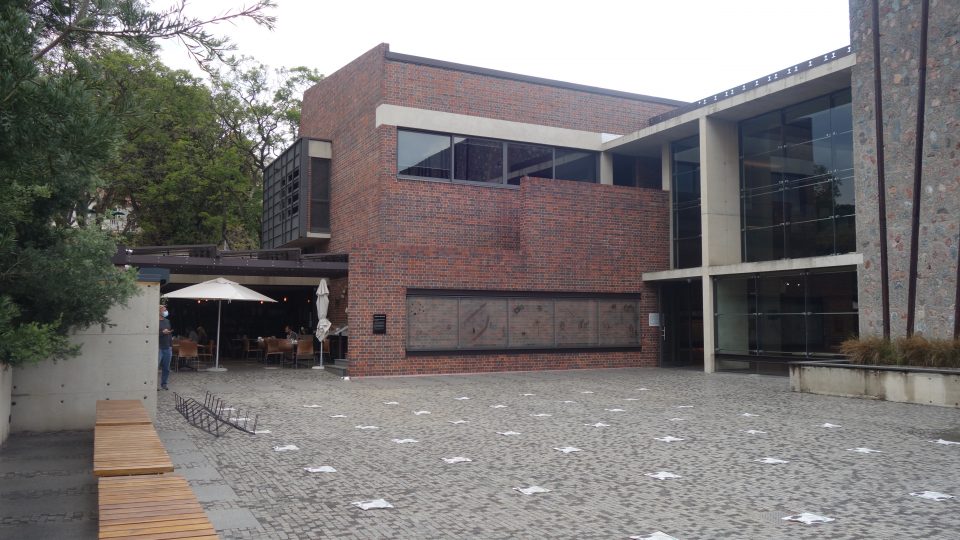
European Cafe 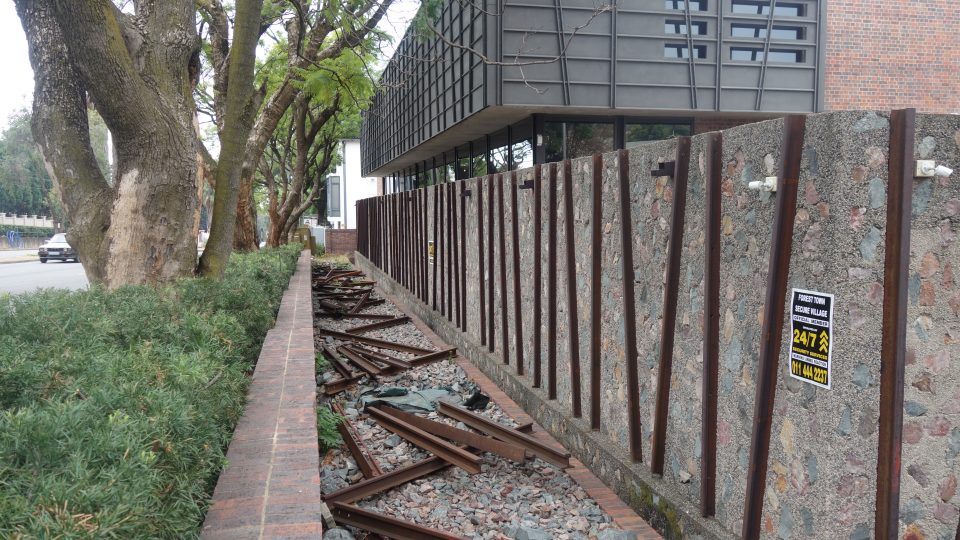
More Railway Tracks 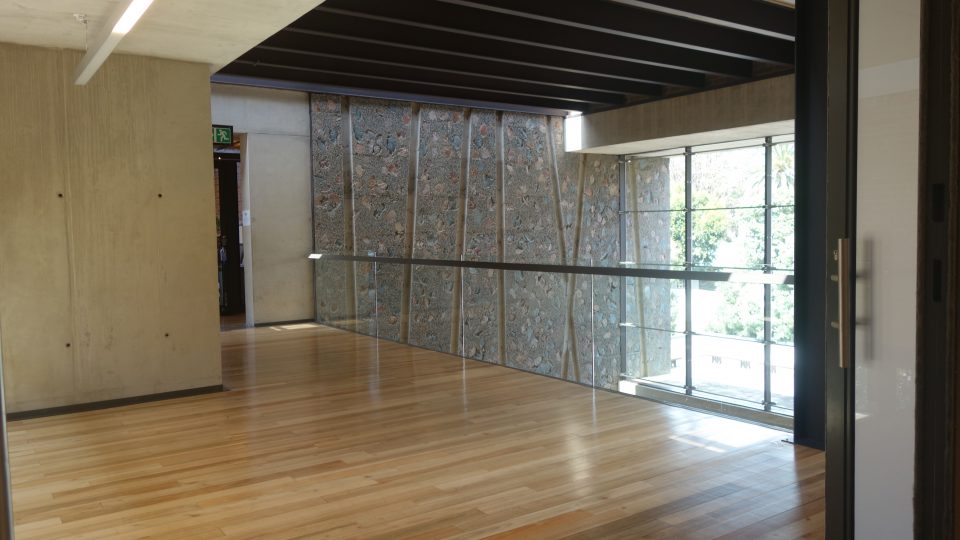
Inside the building the motif continues
Inside, in the permanent exhibition area is a very good exhibit about the Holocaust.
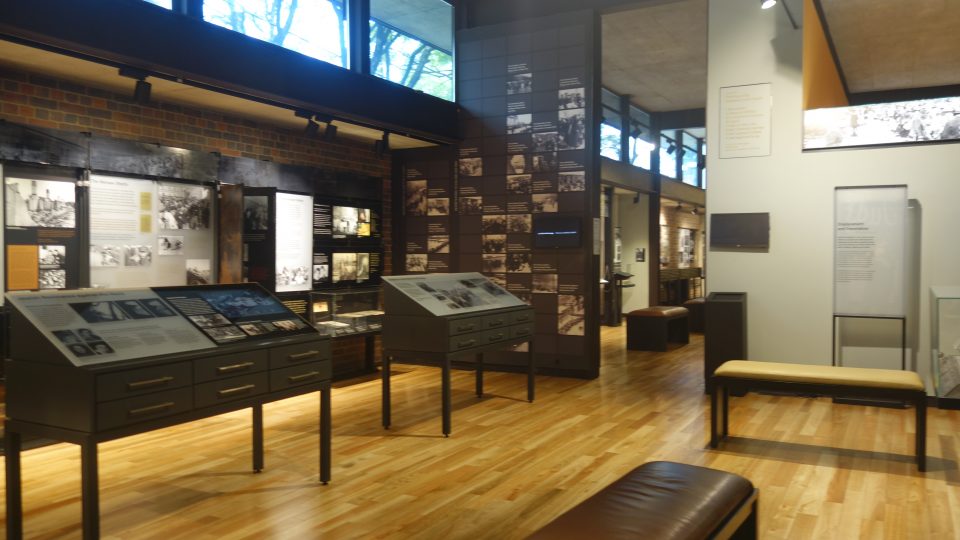

One of many multi-media films in the exhibit 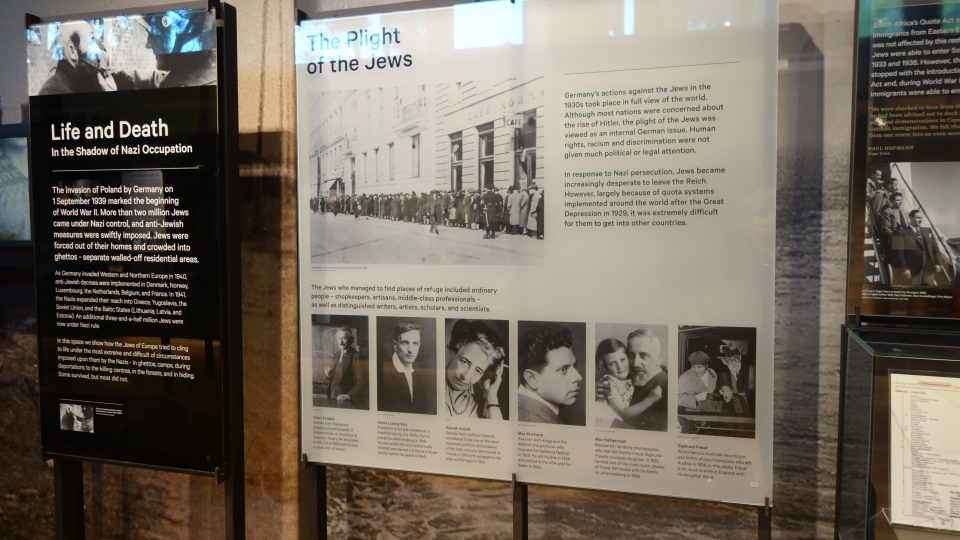

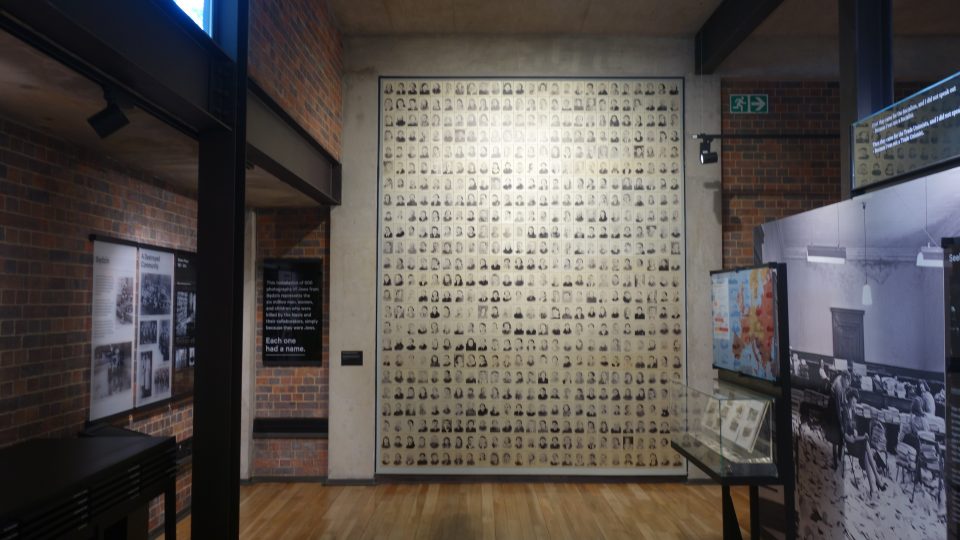
600 Photos to represent the six million 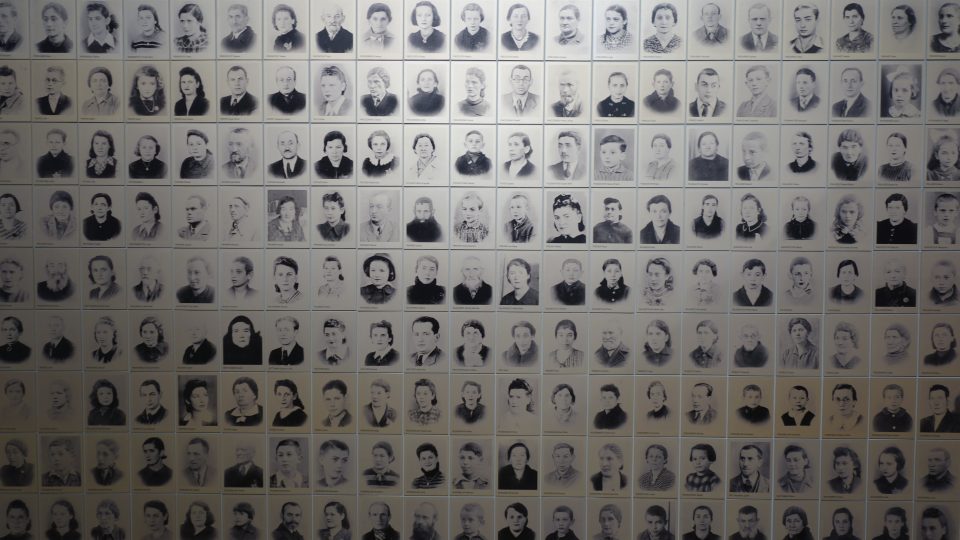
Each photo has a name
Towards the end of the exhibition area, there are some rooms about the Tutsi genocide in Rwanda in 1994. A short video gave a very good, detailed explanation. This was fascinating because this was not a subject I knew much about.
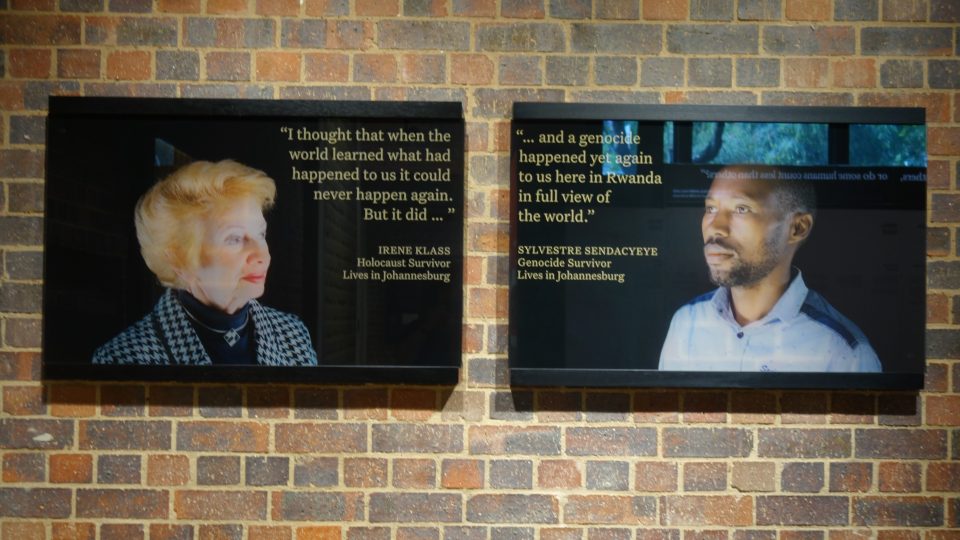
“…a genocide happened yet again to us here in Rwanda” 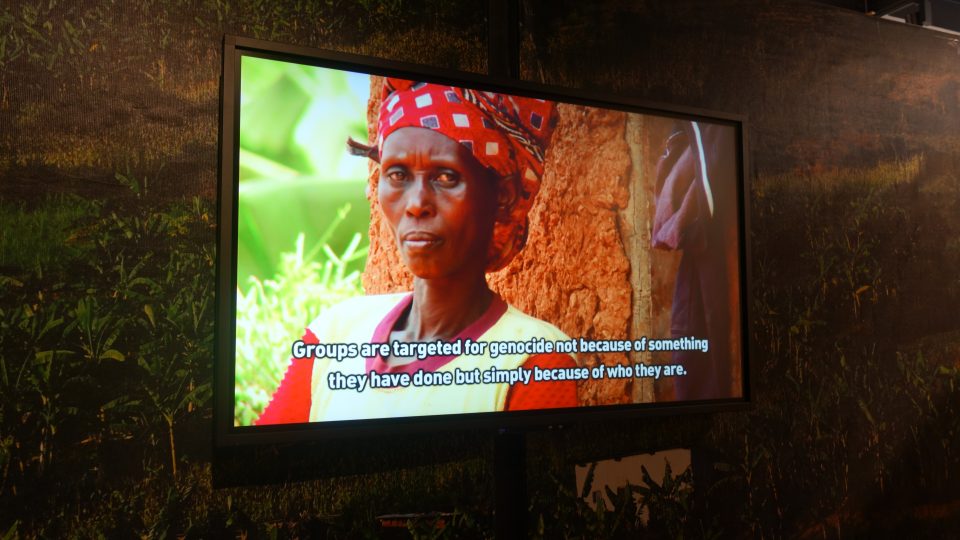
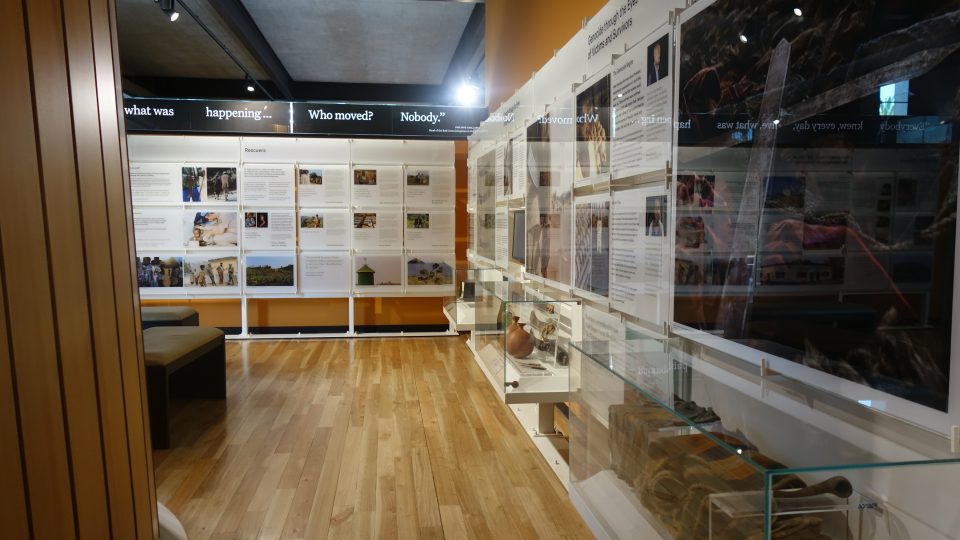
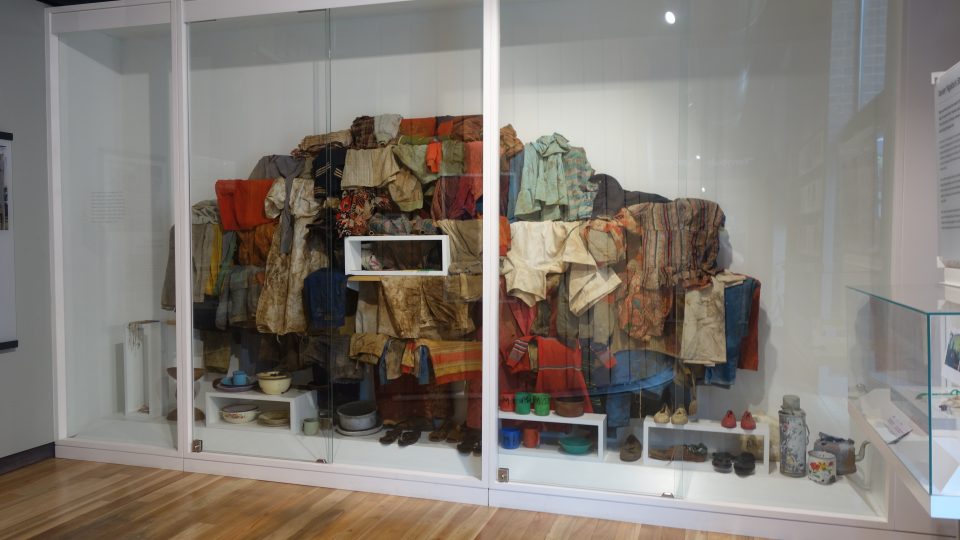
Personal belongs. Reminds me of the displays in Auschwitz
After the Holocaust Center, we drove nearby where there was a blue plaque for Helen Suzman. Blue plaques are commemorative plaques all around the city of Johannesburg that indicate heritage sites. Helen Suzman, was a Jewish member of parliament and anti-apartheid activist. A plaque in her honor was placed near her childhood home.
From there, we had intended to see four former synagogues in what was once a Jewish neighborhood closer to downtown Johannesburg. In speaking with the guide at the museum, she did not think this was such a good idea. She brought a security guard from the museum to speak with us. We showed him on the map in the app exactly where we were headed, and he said – you can only go there in daylight with your windows up and the car doors locked. Do not leave your car. You must only drive on the main road and even if the GPS tells you to go on a side street, do not drive off the main road. He was also familiar with one of the synagogues and said it is not really visible from the road. After this warning, we decided to skip these synagogues and continue to areas that require less caution.
We had spent almost two hours at the museum and were now hungry for lunch. We used the Happy Cow app to find a vegan restaurant not far from our next Wandering Jew location. This gave us the opportunity to compare ease of use in Happy Cow versus Wandering Jew.
We chose to eat lunch at a place called Free Food, a vegan restaurant in the Melrose Arch neighborhood. It is called Free Food because the food served there is free of meat, free of dairy, free of gluten and free of sugar. In spite of all that, the food was delicious – and I would say that the eggplant pizza was the best vegan pizza ever.
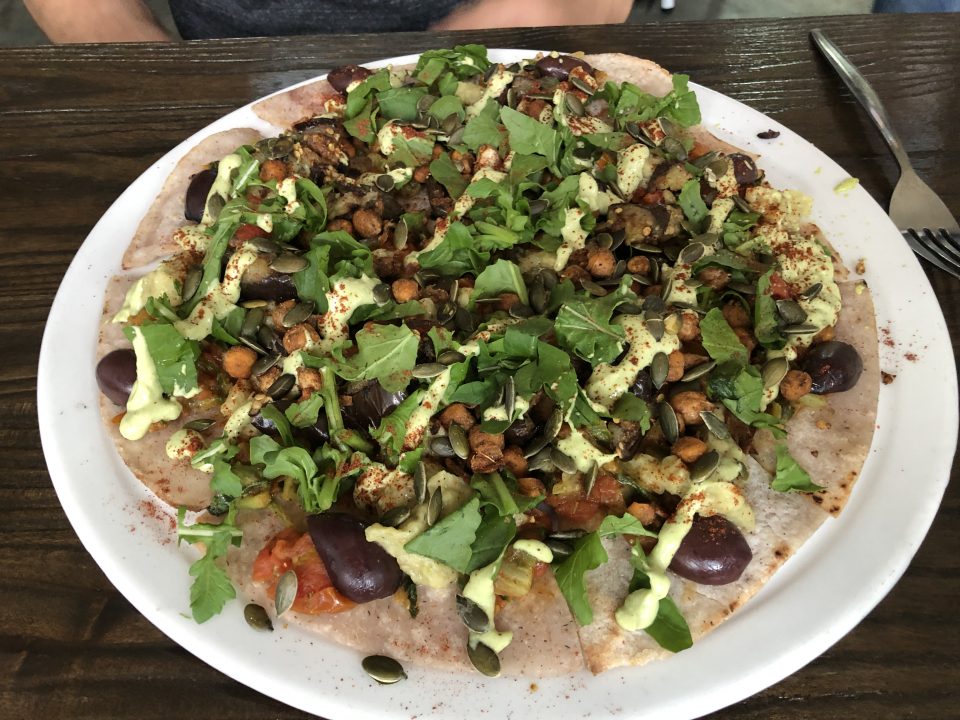
After our meal we had two sites left to visit. These were not strictly Jewish Heritage sites, bur rather historical sites where Jews played a prominent role in their history. The first of these was the Satyagraha house. Mahatma Ghandi lived in this house, along with his friend the Jewish architect and owner of the house, Hermann Kallenbach, from 1908 to 1909. It was here that Ghandi honed his philosophy of Satyagraha – the policy of passive resistance. The two remained fast friends for many years until the death of Kallenbach in 1945.
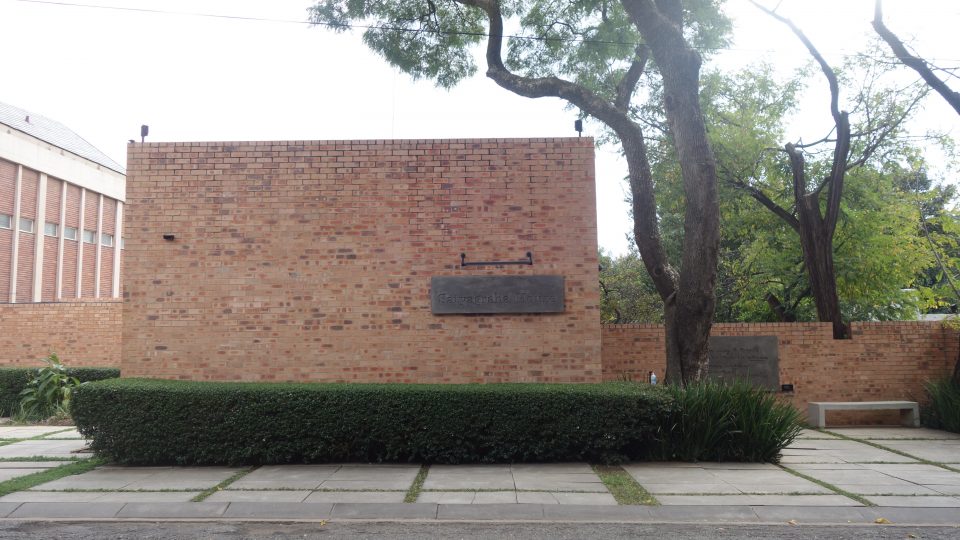
The entrance to the complex 
The house 
Inside the house 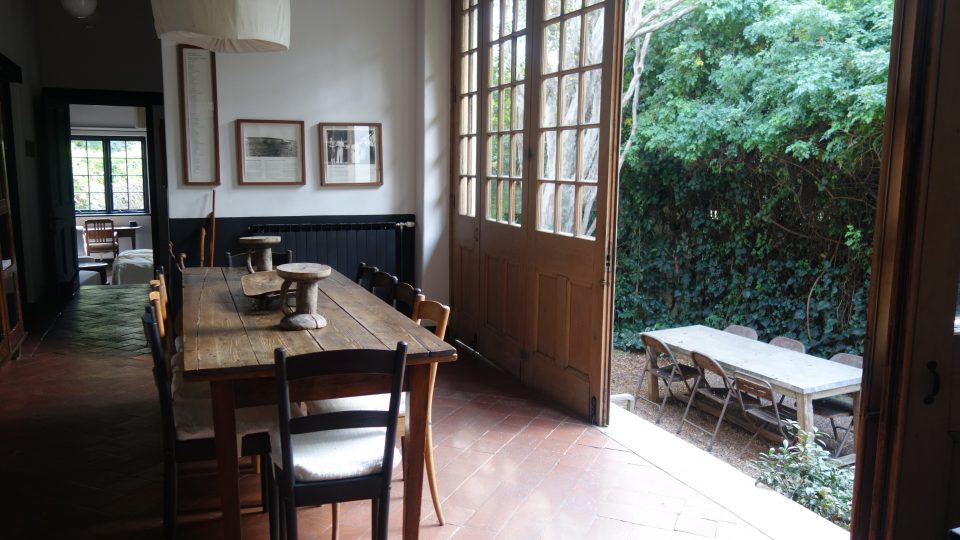
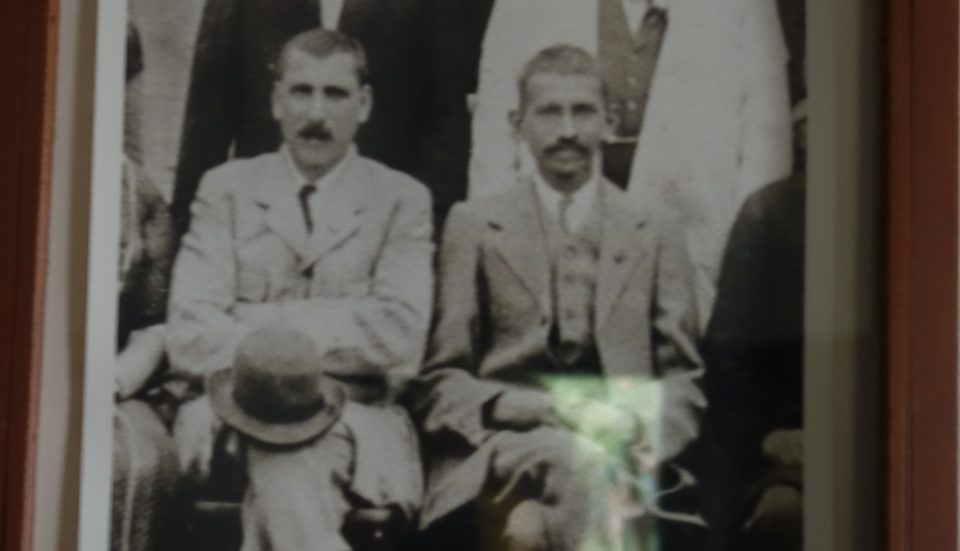
Hermann Kallenbach and Mahatma Gandhi 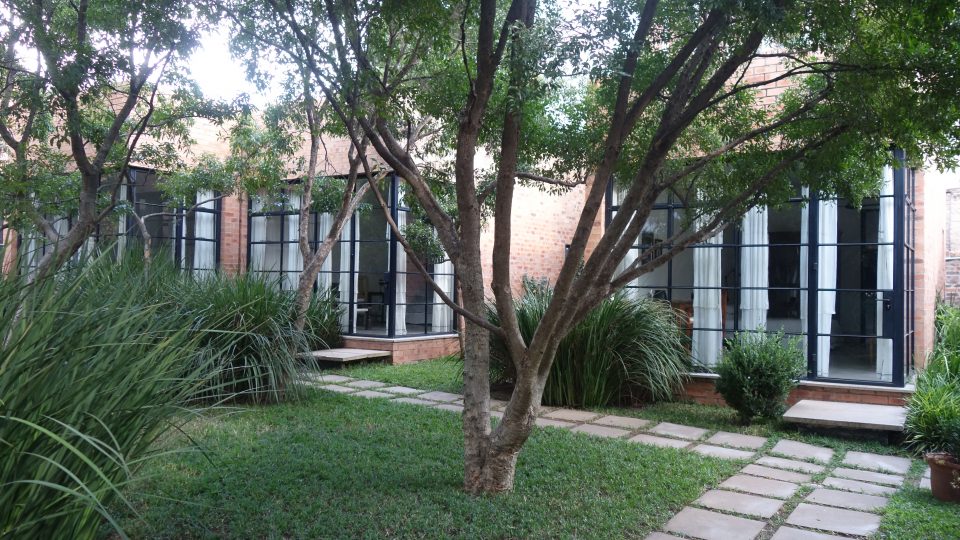
The complex now offers Bed & Breakfast accommodation
The last location was Liliesleaf. We drove to the entrance just to verify the GPS coordinates, since the place is still closed because of Covid. Liliesleaf farm was used as a safe house for African National Congress activists in the 1960s in the fight against apartheid. On 11 July 1963, security police raided the farm and arrested members of the underground. Among those arrested where several prominent Jewish activists. Today, Liliesleaf is a national heritage site that tells the story of the journey to democracy in South Africa.
All in all, a very interesting day – both in what we learned about Jewish Johannesburg and in what we learned that needs to be improved in our app.
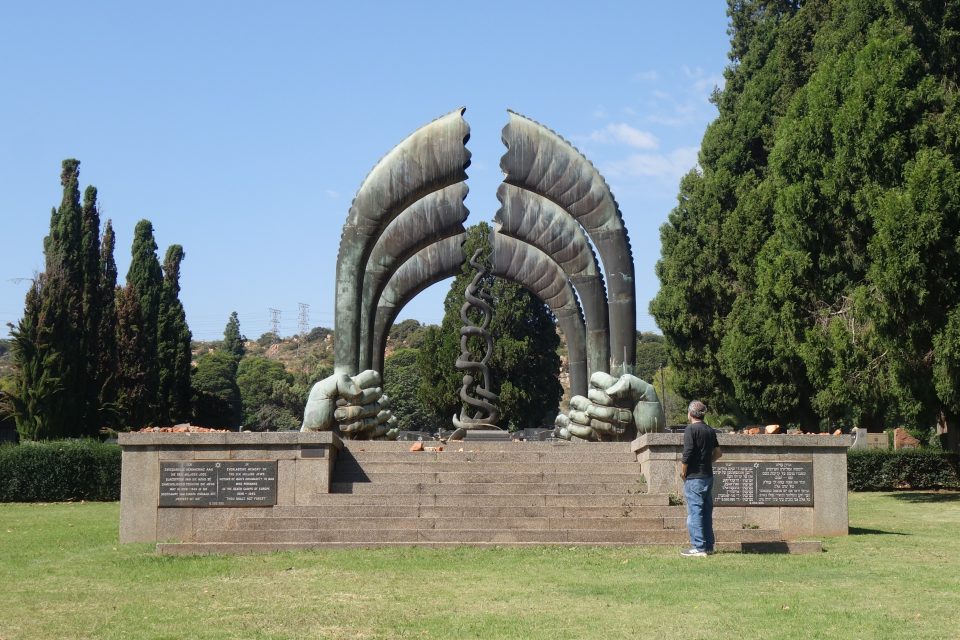
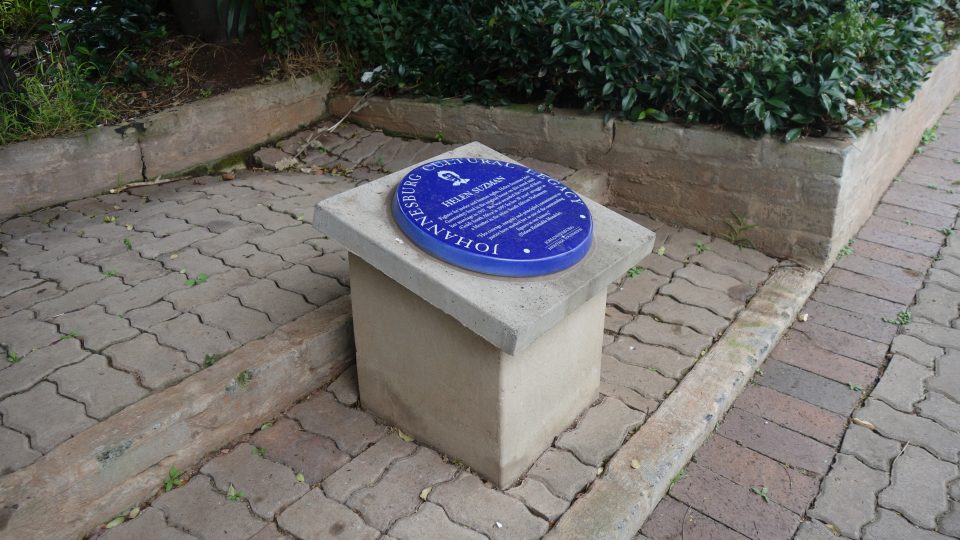

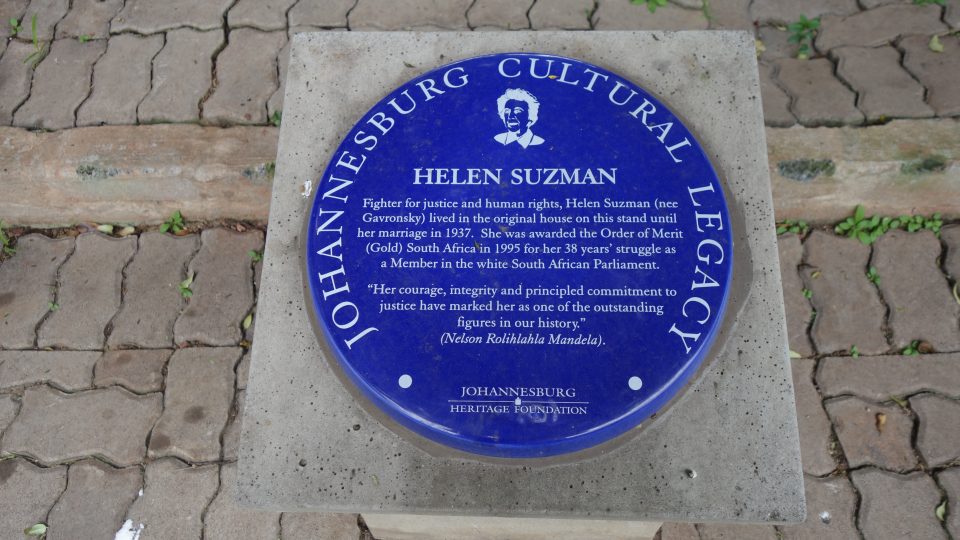
Sounds like a nice day, and a real lesson in QA 🙂
So interesting! You saw in a day more than I’ve seen in 3 years in Joburg
Since so many South African Jews moved to Israel, this might be a good article/topic for Ezra magazine, to follow the first one about your app – with some edits, of course.
That’s what happens when you let the developers do the QA 🙂